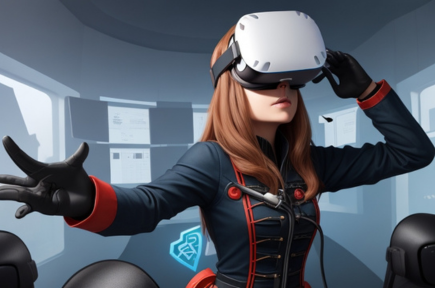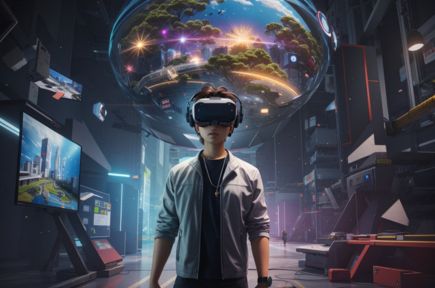In recent years, the integration of virtual reality (VR) in education has rapidly gained momentum, transforming the way students learn and engage with various subjects. One area that has seen remarkable benefits from the use of VR is math literacy.
By immersing students in realistic and interactive virtual environments, virtual reality has proven to be an effective tool for improving math comprehension, problem-solving skills, and overall learning outcomes.
In this article, we will explore how virtual reality assists students in enhancing their math literacy while making learning a truly exciting and engaging experience.
Understanding the Impact of Virtual Reality in Education
Virtual reality is an advanced technology that creates a simulated environment, allowing users to interact and experience situations that may not be possible in the real world.
In education, VR offers a unique opportunity to present complex concepts in a visually captivating manner, making it easier for students to grasp and retain information.
By stimulating multiple senses, such as sight and sound, VR can improve information retention and understanding compared to traditional learning methods.

Overcoming Math Anxiety with Immersive Learning
Math anxiety is a common issue among students, causing fear and stress when dealing with mathematical concepts. Virtual reality provides a safe and supportive environment for students to confront their fears and overcome math anxiety.
Through gamified learning experiences and interactive challenges, VR gradually builds students’ confidence and encourages them to embrace mathematical challenges with enthusiasm.
Interactive Exploration of Mathematical Concepts
Traditional math textbooks and lectures often struggle to capture students’ attention and interest. Virtual reality offers an innovative solution by allowing students to explore mathematical concepts through immersive experiences.
For instance, students can travel through historical eras, solve real-life math problems, and witness abstract concepts visually, making the learning process more enjoyable and effective.
Personalized Learning Paths
Every student has a unique learning pace and style. Virtual reality enables educators to tailor math lessons to individual needs. Through adaptive algorithms, VR applications can analyze a student’s progress and offer personalized learning paths, ensuring that each student receives the right level of challenge and support to thrive academically.
Enhanced Problem-Solving Skills
Mathematics is fundamentally about problem-solving. Virtual reality presents students with a diverse array of interactive scenarios and puzzles that require mathematical thinking to solve.
By engaging in these virtual challenges, students develop critical problem-solving skills, logical reasoning, and creativity – all of which are invaluable assets in their academic journey and future careers.
Real-World Applications of Math
One of the most common questions students ask about math is, “When will I ever use this in real life?” Virtual reality bridges this gap by demonstrating the practical applications of math in various fields, such as architecture, engineering, and even gaming.
By experiencing how math influences real-world outcomes, students are more likely to perceive the relevance and importance of mathematical literacy.
Fostering Collaborative Learning
VR experiences can be designed to encourage collaborative learning among students. By participating in group activities and solving math problems together in virtual environments, students develop teamwork and communication skills, which are vital for their academic and professional success.
My Opinion
In conclusion, virtual reality has emerged as a revolutionary educational tool, empowering students to improve their math literacy in an engaging and effective manner.
By transforming abstract concepts into interactive experiences and providing personalized learning paths, VR enhances problem-solving abilities, reduces math anxiety, and cultivates a deeper appreciation for the practical applications of mathematics.
As the integration of virtual reality continues to expand, it is evident that this technology holds immense potential in shaping the future of education, making math a subject that students no longer fear but eagerly embrace.


